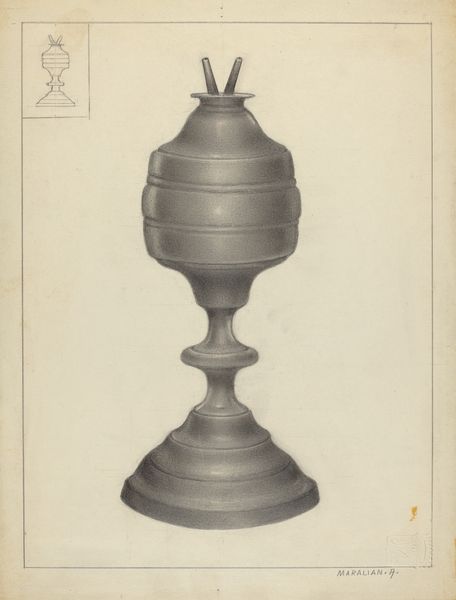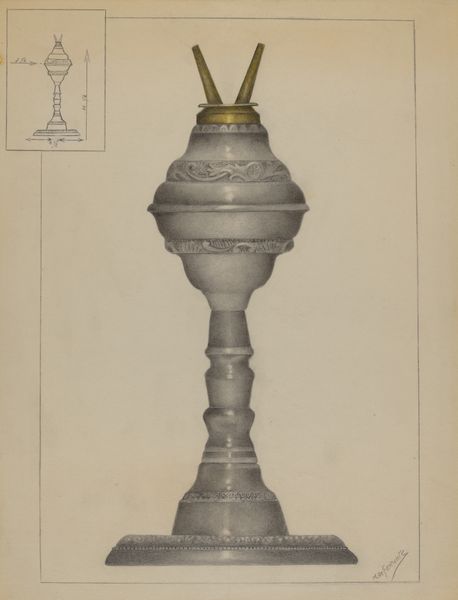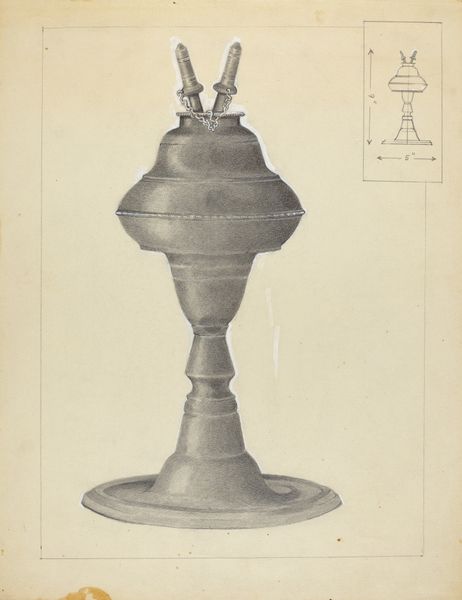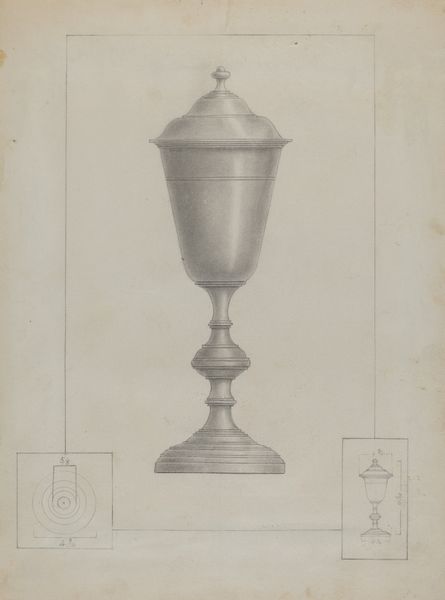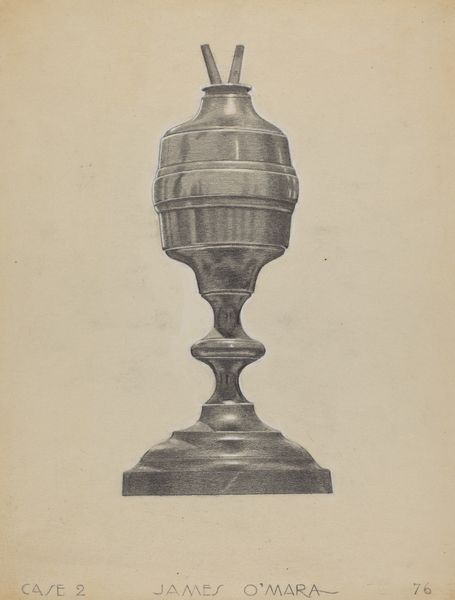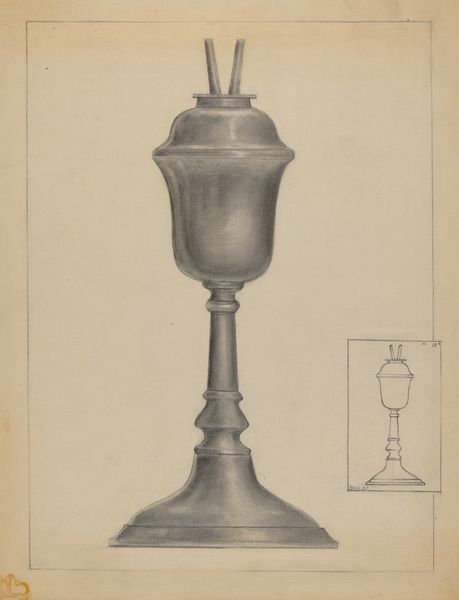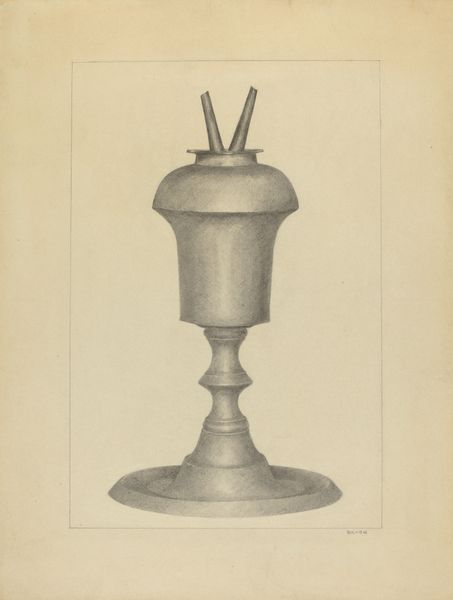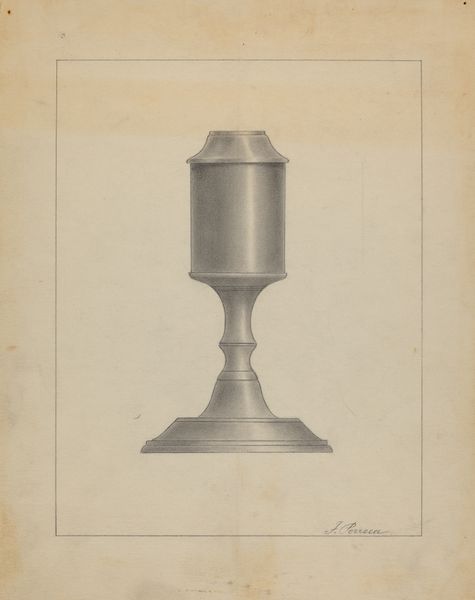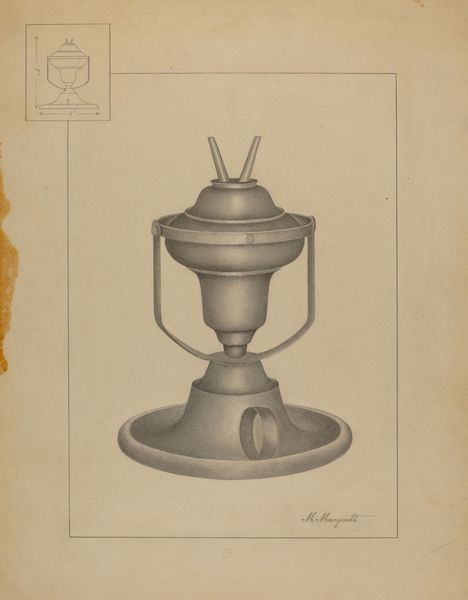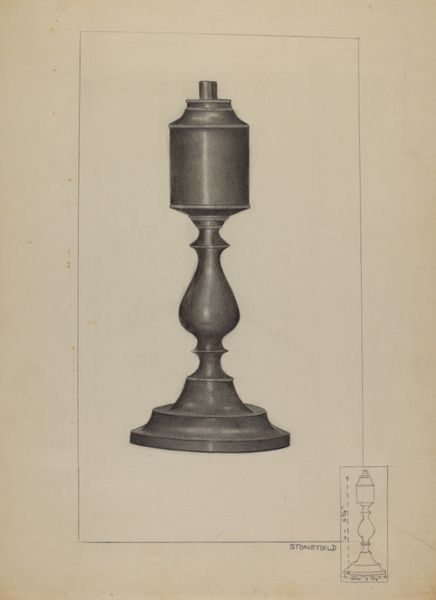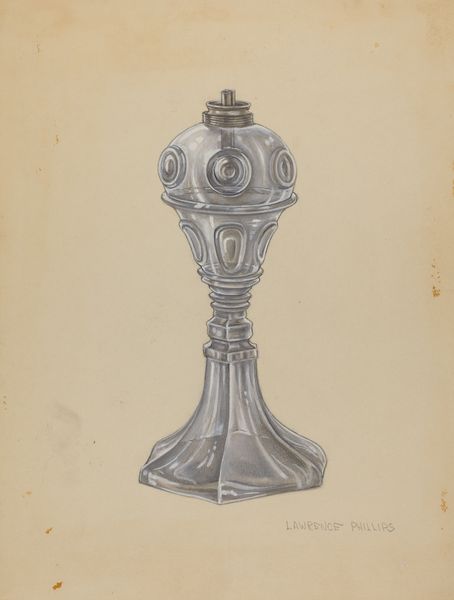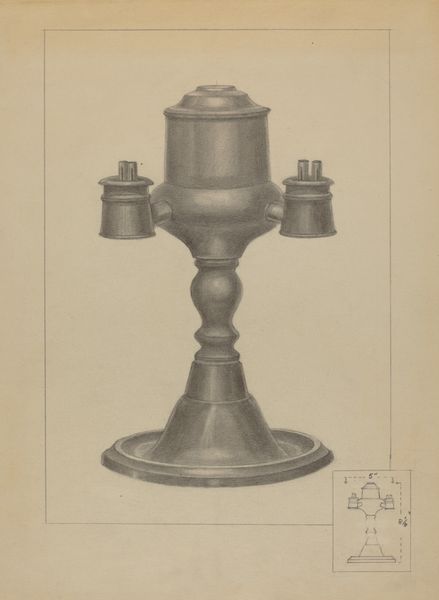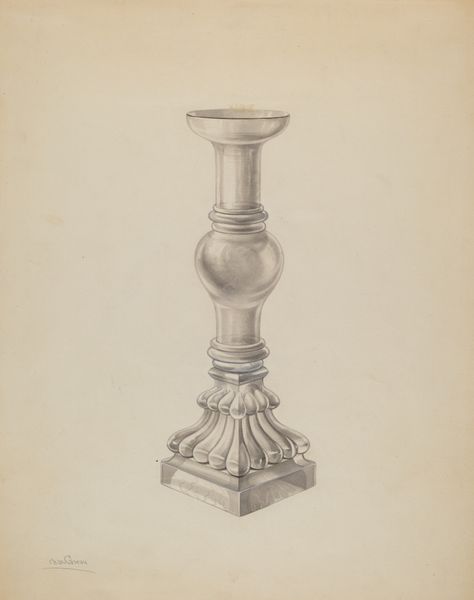
drawing, pencil
#
pencil drawn
#
drawing
#
pencil sketch
#
pencil drawing
#
geometric
#
pencil
Dimensions: overall: 29.8 x 23.2 cm (11 3/4 x 9 1/8 in.)
Copyright: National Gallery of Art: CC0 1.0
Curator: Here we have A. Zaidenberg's "Lamp," dating to around 1936, rendered meticulously in pencil. Editor: It strikes me immediately as… ponderous. The weight of the shading gives it an almost oppressive presence despite being a drawing. Curator: The choice to depict something as utilitarian as a lamp with such formality invites questions. Consider the socio-political climate of the 1930s, especially in the regions where Zaidenberg may have been working. A simple object of domesticity is imbued with an almost monumental quality, perhaps reflecting anxieties about home, security, and the future during a time of great upheaval. Editor: I'm intrigued by the geometric progression here—the base ascends in measured tiers, supporting that swollen, almost organic upper form. And what do you make of the two prongs extending from the top? It disrupts the otherwise perfect symmetry, hinting at a hidden functionality, maybe a wick or some other forgotten component. Curator: It makes you wonder if this wasn't just about the aesthetics, but about exploring how art intersects with technology. Lamps at that time represented modernity, illumination, literally and figuratively, a push against the darkness of tradition or despair. Was Zaidenberg engaging with these ideas, critiquing or celebrating them through this medium? And, if so, whose darkness are we illuminating? Editor: Interesting. The pencilwork itself is remarkable. See how Zaidenberg uses tone to describe the almost imperceptible shifts in form? There’s a certain purity to the line and shadow, almost neoclassical in its adherence to form and balance, but slightly disrupted by a certain coldness and mechanical dryness. It does convey technicality as if from a blueprint. Curator: That visual tension between artistry and industry certainly speaks to the era. Zaidenberg asks us to consider the role of everyday objects as potential carriers of meaning. What histories are etched into their forms, and how do they reflect the larger narratives of power and societal change? Editor: Precisely. By giving the lamp such graphic weight, it is elevated from its functionality. This lends the familiar object a peculiar sense of distance, demanding the observer’s engagement and, indeed, inviting the kind of sociopolitical interrogation you champion. Curator: And maybe by looking closely, through the rendering, and asking those tough questions, we are indeed enlightened. Editor: A compelling dialogue, indeed. Thank you for illuminating the sociopolitical narrative surrounding this unassuming piece.
Comments
No comments
Be the first to comment and join the conversation on the ultimate creative platform.
